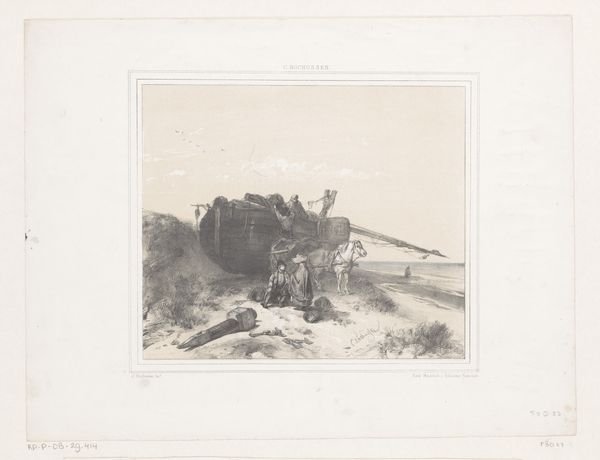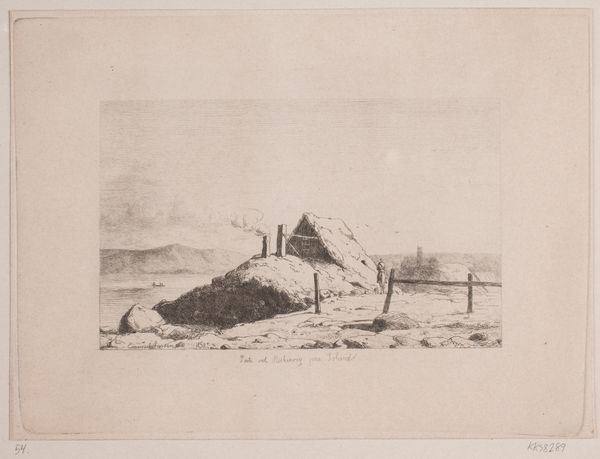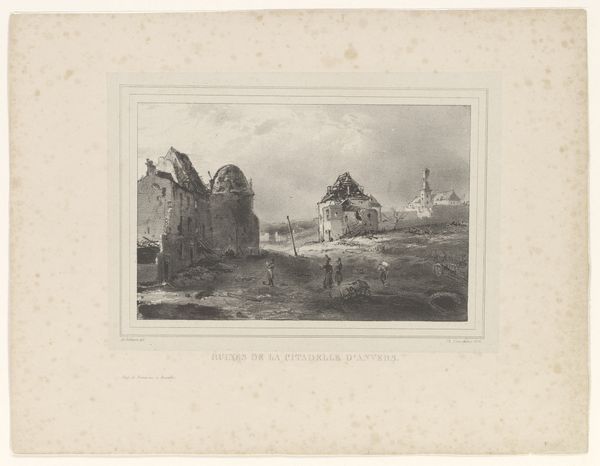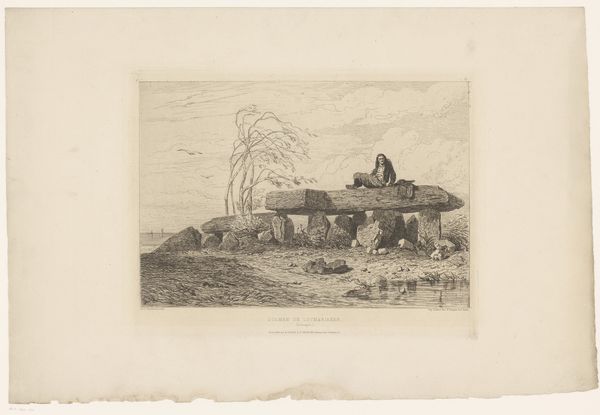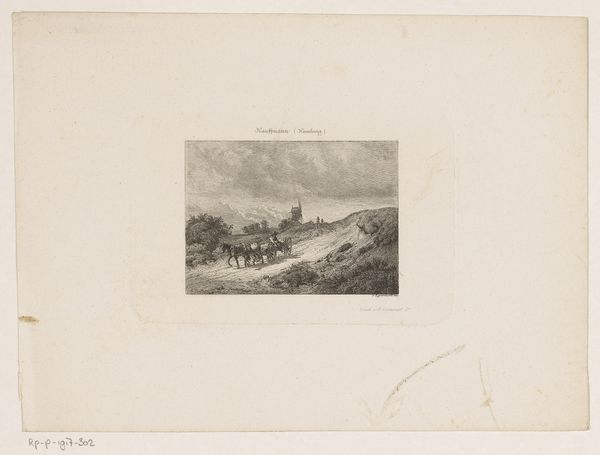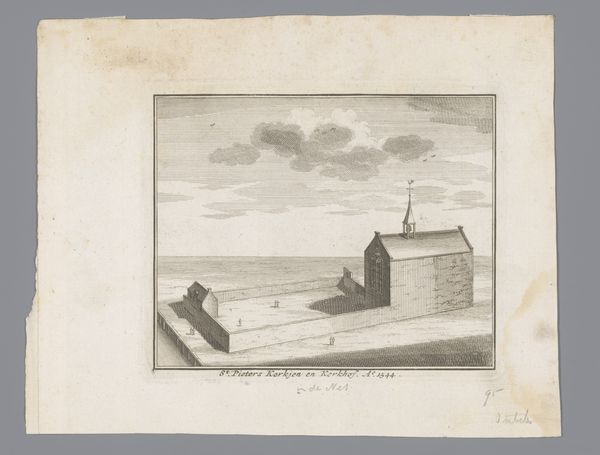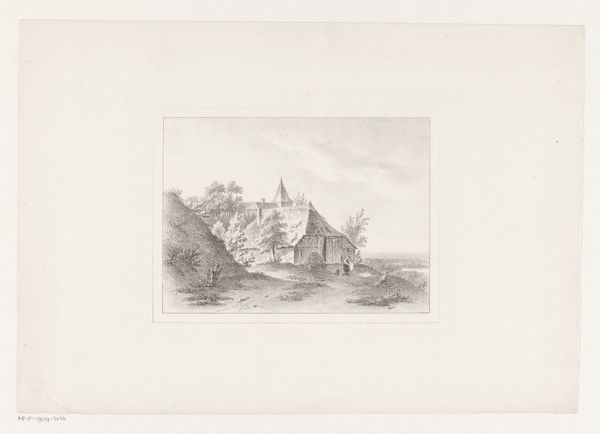
Kirkeruin på Grønland. Illustration til W.A. Graah. Undersøgelsesrejse til østkysten af Grønland 1832
0:00
0:00
print, engraving
# print
#
landscape
#
romanticism
#
history-painting
#
engraving
Dimensions: 190 mm (height) x 235 mm (width) (plademaal)
Editor: Here we have Oluf Bagge's engraving from 1832, titled *Kirkeruin på Grønland,* or *Church Ruin in Greenland.* It feels so stark and desolate. The ruin itself seems to be sighing in the Arctic air. What captures your attention most when you look at this, in terms of history? Curator: Ah, yes, that sigh is almost audible, isn't it? What grips me is the romanticism clinging to this abandoned place. Think about it: Greenland, a Norse settlement so far removed, now just a ruin etched with incredible detail, like wrinkles on an old explorer’s face. One can almost hear the longboats creaking, can't you? This work also presents us with an illustration intended for the reports of scientific expeditions! So where is the meeting point between scientific fact and romantiscism here, do you think? Editor: That’s fascinating. The juxtaposition of scientific record and romantic yearning… So, it's not just documenting a place; it’s about evoking a feeling, perhaps the sublime loneliness of exploration. But does accuracy suffer for the sake of a good story? Curator: Accuracy is a funny thing, isn't it? Like history itself, subject to interpretation. I wonder how many stories those stones could tell if they could speak? Bagge makes you wonder not just *what* the ruin is, but *what it means*. Does it mean the futility of existence? That all collapses into the sea in the end, like these old stones? It's so moving. It invites a reflective sort of gaze to imagine Greenland's nature. What do you think? Editor: I completely agree. The visual precision combined with the palpable atmosphere really gets under your skin. I initially saw it as just a ruin, but now it feels like a poignant statement on time, isolation, and the weight of history. Curator: Precisely! And isn't that what art is all about? Helping us see beyond the surface and delve into the richer, more evocative stories beneath.
Comments
No comments
Be the first to comment and join the conversation on the ultimate creative platform.
